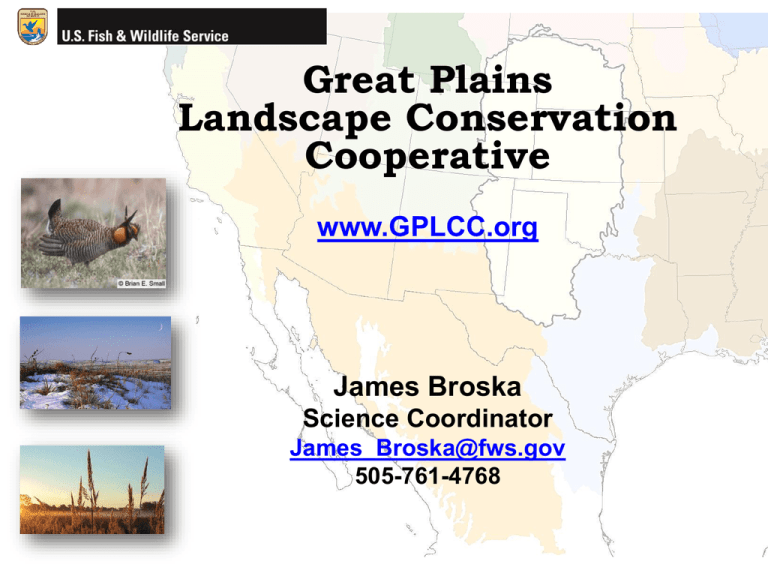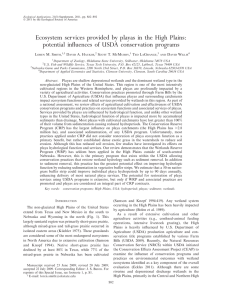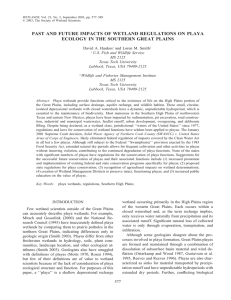James Presentation_12.18.13
advertisement

Great Plains Landscape Conservation Cooperative www.GPLCC.org James Broska Science Coordinator James_Broska@fws.gov 505-761-4768 The mission of the Great Plains LCC is to lead the development, facilitation and integration of science and management to ensure strategic natural resource conservation on the Great Plains. The objective of the GPLCC is to maximize stakeholder effort across the landscape and optimize data collection, use, and management in order to conserve habitat and priority species through the development and application of scientific data. GPLCC and SHC Strategic Habitat Conservation An adaptive management approach to sciencebased landscape conservation follows these steps: Biological Planning Conservation Design Conservation Delivery Monitoring / Research LCCs, SHC and Landscape Conservation Design A principal function of LCCs will be to provide scientific and technical expertise to produce landscape-scale conservation designs. Provide scientific and technical support for conservation for the entire range of a priority species or groups of species. Support biological planning, conservation design, research, and inventory and monitoring programs through partner engagement and shared resources. Review of GPLCC Science Prioritization Fiscal Years 2011/2012: • The GPLCC endorsed using priority species as indicators of habitat type or guild of species. • The presence of indicator species denotes specific conditions, structure and function of habitats within the GPLCC. • Research and monitoring of the habitats and life cycles of indicator species will benefit other species. Species Arkansas River Shiner: Northern Pintail: Lesser Prairie-Chicken: Snowy Plover: Black-tailed Prairie Dog: Habitat Prairie Rivers and Streams Playas Grasslands, Shrub lands, Savannahs, Dunes Saline Wetlands Grasslands Understanding Landscape Scale Stressors on Habitats and Species Landscape Scale Stressors: Changing Precipitation Patterns • Extended drought • Intense storm events • Early snowmelt / runoff Regional Scale Impacts: Changes in River Hydrology • Timing • Frequency • Duration • Magnitude Watershed Scale Impacts: • Changes in surface water/groundwater interactions • Water-quality degradation Habitat Scale Impacts: • Altered geomorphology • Channel/floodplain disconnect • Fragmentation Species Scale Impacts: • Elimination of spawning areas • Barriers to migration FY 2013 Science Priorities Playas • Grass plantings and buffers – Which are most effective in relation to: a) establishment of native grasses b) facilitating natural inundation, c) preventing sedimentation, and, d) altered or managed optimally. • Number and distribution – What number of playas, and in what spatial arrangement is necessary to support migrating and wintering wetland birds and/or other playadependent species? • Research into the socioeconomic impediments to playa conservation FY 2013 Science Priorities Prairie Rivers and Streams Priorities • Status and trends of priority species and habitats. • Effects of watershed alteration and fragmentation on the sustainability of priority species. • Research into the development of water conservation and management strategies consistent with the ecological requirements of priority species. 2014 and beyond… A Strategy for Grassland Systems: Utilizing a Landscape Conservation Design to identify Threats, Opportunities and Science Needs











